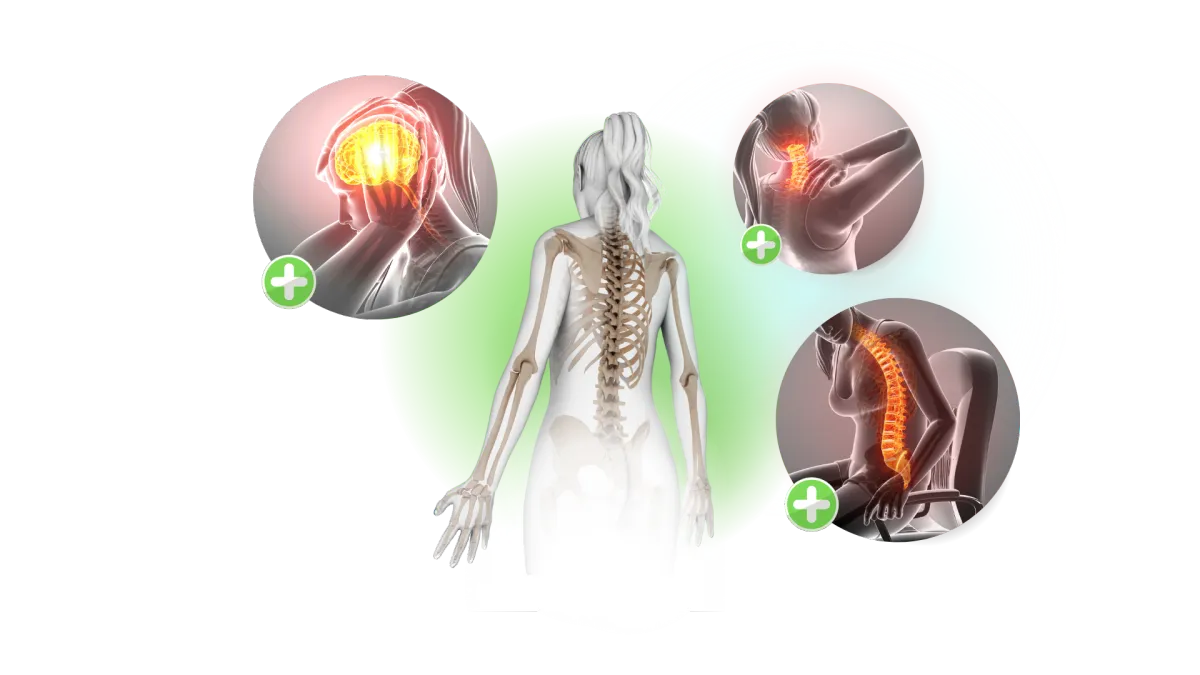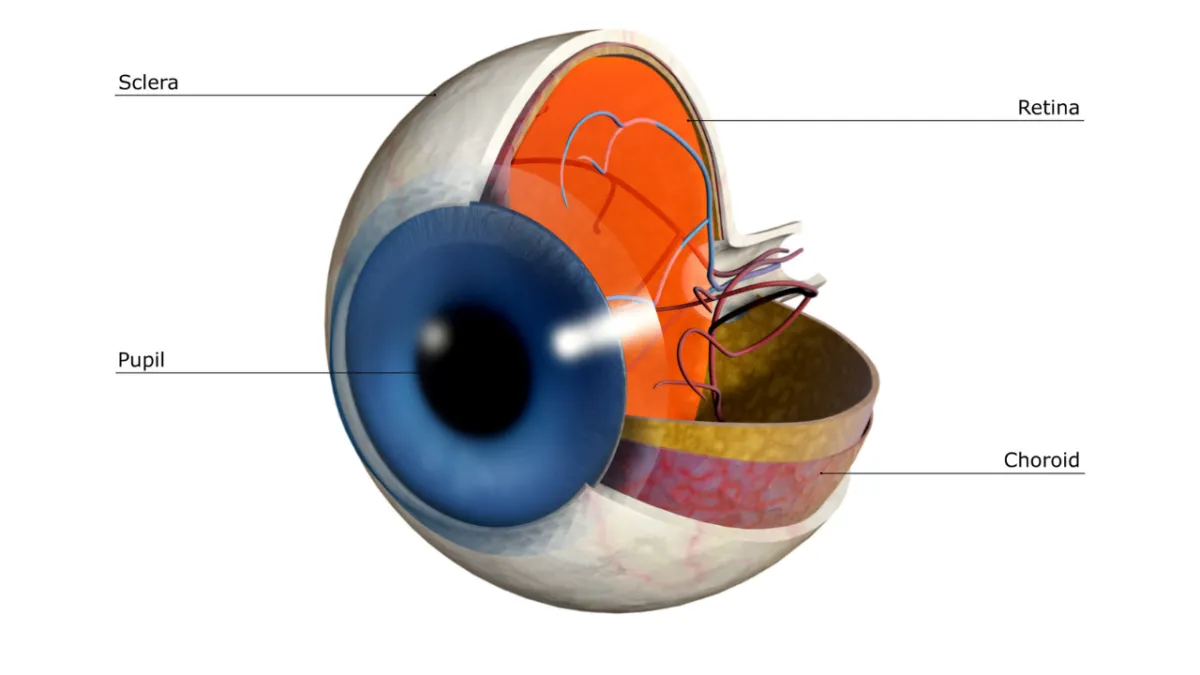Gentle Chiropractic Care in Penrith | Helping You Move Better and Feel More Confident
We help people with persistent back or neck pain move more freely, regain confidence, and get back to doing the things they love — gently, safely, and without forceful “cracking.”
About Your Penrith Chiropractor
At Your Spinal Health in Penrith, we specialise in gentle, low-force chiropractic care.
Our aim is simple: reduce pain, improve movement, and support your body’s natural healing.
Most people follow a short, structured plan over around 12 weeks and notice steady progress.
Everyone’s different, and results always vary — that’s why your care starts with a personalised Spinal Health Assessment.
Peter Bennett – Chiropractor
Registered with the General Chiropractic Council (Reg No: 01124)
Member of the United Chiropractic Association
Your Spinal Health
Registered chiropractic care in Penrith, Cumbria
5 Poets Walk, Penrith CA11 7HJ · 01768 899 036
Your Trusted Spinal Health Experts
At Your Spinal Health, we are passionate about helping you achieve your best health and well-being. We have been serving our community for over 20 years with a commitment to providing the highest quality care.
Combining natural hands-on treatment with our week-on-week progressive system to help symptoms like back pain, neck pain and headaches.

Start NOW. Just 1-click away
We help people feel safer and more confident moving again.
Save On Your Treatment Costs
Each visit is £50.
Save if you choose to pre pay.

Start NOW. Just 1-click away
Our clients tell us they can do more of what they enjoy once their pain is under control. Everyone’s different, and results vary.
Peter Bennett, Chiropractor – Registered with the General Chiropractic Council (Reg. No: 01124)
I'm Peter Bennett!
Hello, I’m Peter Bennett, a chiropractor based in Penrith, Cumbria.
I’ve spent more than 25 years helping people reduce pain, move better, and get more life back into their years.
My approach is gentle — no cracking, no heavy-handed adjustments — just safe, effective techniques that work with your body instead of against it.
Over the years, I’ve learned that the human body is incredibly good at trying to heal itself. My job is simply to understand what it’s trying to do and give it the right support.
People come to see me for all sorts of reasons — stiff backs after gardening, neck pain from long hours at a desk, or just feeling less steady than they used to.
Whatever brings you in, my goal is the same: to help you move more easily and feel more confident doing the things you love.
I believe great healthcare starts with kindness, clear explanations, and respect for each person’s pace. You’ll never be rushed or pressured here — just guided gently toward better movement and lasting results.
When I’m not in clinic, I’m usually outdoors walking in the fells, writing about longevity science, or creating online programs that help people stay active and independent later in life.

Why I Do This
When I first started in chiropractic, I thought the job was all about fixing spines.
But over the years, I’ve realised it’s really about helping people trust their bodies again.
I’ve seen how back pain can slowly chip away at someone’s confidence — the way they move, work, even how they laugh. One day it’s just a niggle, and before long it’s changed how they live. Helping someone turn that around, gently and safely, is still the best part of my week.
I’ve always believed the body isn’t broken — it’s doing its best to protect you. My role is to understand what it’s trying to do and guide it back toward balance. That might mean easing tension in the spine, retraining movement, or simply helping you breathe a little easier.
What keeps me going is seeing people realise they can do more than they thought — walking the fells again, picking up grandchildren, or just waking up without that constant stiffness.
It’s those moments that remind me why I chose this path all those years ago.
My aim has never been just to treat backs — it’s to help people move freely, live fully, and enjoy their years with confidence.
FAQS
What conditions can we help with?
Spinal health care can help a wide range of conditions, including back and neck pain, headaches, sciatica, joint pain, and even issues related to posture. It's not just about addressing the symptoms; it's about improving your overall health and well-being by improving the health of your spine and nervous system. If you have specific concerns or questions about your condition, please don't hesitate to ask for a consultation to discuss how spinal health care can benefit you.
Is spinal health care safe, and are the adjustments painful?
Spinal health care is generally considered safe when performed by trained professionals. The adjustments are typically not painful; in fact, many clients report feeling relief and improved mobility after an adjustment. Our therapists are highly skilled and will use gentle techniques tailored to your individual needs. Your comfort and safety are our top priorities, and we will explain every step of the process to ensure you feel at ease during your sessions.
How many visits will I need to see results?
The number of sessions you'll need depends on various factors, including the nature and severity of your condition, your overall health, and your treatment goals. Some clients experience relief after just a few sessions, while others may require more ongoing care. During your initial Spinal Health Assessment, we will assess your specific situation and provide a personalised treatment plan. Our goal is to provide efficient and effective care, so you can return to a pain-free and healthy lifestyle as soon as possible.
When should I see my doctor instead of a chiropractor?
Most back or neck problems are mechanical and respond well to gentle chiropractic care.
See your GP or call NHS 111 if you have fever, weight loss, cancer history, night sweats, recent trauma, numbness in the saddle area, bladder or bowel changes, severe unrelenting pain, or sudden weakness.
Call 999 immediately if you notice stroke signs —
Face drooping, Arm weakness, Speech changes, Time to call 999 (FAST) — or sudden dizziness, vision loss, or a severe new headache.
If you’re unsure, call us — we’ll help you decide the safest next step.
Latest Articles on Spinal Health

Can a Misaligned Spine Really Affect Your Vision?
Seeing the World Clearly
Think about how much you rely on your sight each day. From reading a book to checking your phone, from driving your car to watching TV—your eyes are your window to the world.
But did you know that your spine, especially your neck, plays a big role in how well your vision works?
The Nerves Behind Your Eyes
Your eyes capture light, but it’s your optic nerves and brain that actually let you see. Those nerves don’t work in isolation—they’re part of your nervous system, the same system that runs through your spine.
As Gray’s Anatomy reminds us:
“The nervous system controls and coordinates all the functions of the body and relates the individual to his environment.”
When your spine is healthy and aligned, signals between your eyes and brain travel freely. But if there’s a misalignment in the upper neck, it can create nerve irritation or changes in blood flow that may affect how clearly you see.
Did You Know?
Your brain doesn’t “see” the outside world directly—it builds an image from the electrical signals your eyes send. If those signals are distorted, the brain’s picture of reality can be blurred, doubled, or strained.
That’s why misfiring nerves don’t just cause pain—they can literally change the way you see the world.
How Spinal Misalignment Affects Vision
A misaligned upper cervical spine (the top of your neck) can:
Trigger headaches that cause visual disturbance.
Contribute to dizziness or eye strain by altering nerve communication.
Reduce blood flow to areas of the brain that process vision.
Irritate sensory nerves that carry information from the eyes.
Interfere with motor nerves that control the tiny muscles moving your eyes—making it harder to focus or switch focus between near and far objects.
Symptoms people sometimes notice include:
Blurred or double vision.
Eye fatigue, especially after screen time.
Trouble focusing on objects at different distances.
Light sensitivity.
Pressure behind the eyes, often linked with headaches.
Simple Tip for Healthier Eyes and Neck
Many vision issues today are linked to screen posture. Hours of leaning forward strain the neck and upper spine, which can irritate the nerves linked to your eyes and their focusing muscles.
Try this:
Every 30 minutes, gently roll your shoulders back, look away from the screen, and focus on something in the distance.
Keep your screen at eye level, so your head isn’t tilting forward.
These small adjustments reduce tension on your neck and protect both your spine and your vision.
Takeaway
Your eyesight doesn’t just depend on healthy eyes—it depends on clear, open communication between your brain and your nerves.
A misaligned spine can distort that communication, affecting not only what you see, but also how well your eyes can focus. By looking after your spinal health, you’re also protecting the way you see the world.

Email [email protected]
Your Spinal Health – Chiropractic Care in Penrith, Cumbria
Peter Bennett – Chiropractor (Reg. No: 01124)
Registered with the General Chiropractic Council and Member of the United Chiropractic Association.
This website provides general information only and is not a substitute for personal professional advice. Results vary between individuals.
If you experience severe or worsening symptoms — especially weakness, numbness, or bladder/bowel changes — seek urgent medical attention.
